I was feeling pretty burnt out by late afternoon yesterday, but really wanted to do the free Plovdiv walking tour straight away from 6PM to 8:30PM as a) it would be cooler than between 11AM and 1:30PM and b) so that my time would be my own on Thursday. I knew about this tour because I did the free tour in Sofia.
My post from yesterday left off just before the tour, but I forgot to mention something. As I headed for the tour, I started to feel a bad headache coming on, a combination of too little sleep and too much heat. There are several pharmacies along the main pedestrian street (Knyaz Alexander) so I decided to try again to find some nurofen (ibuprofen). Every place I’d been to so far had at least some service in English, so I asked the pharmacist if she spoke English and she said no! A little taken aback, I then said, “Nurofen?” and she replied, “Yes! Express?” I figured that had to be the fast acting formula, so I said yes. I examined the box she handed me to make sure it was ibuprofen, which it was. It was about 5CAD for 10 gel tablets, which sounds expensive to me, but I was in pain! I then went to sit by the fountain to scour the informational pamphlet in the box to find the dosage. It was all in Bulgarian, of course, but I could recognise numbers as they are written like ours and also the words “hour” and “day.” So even if I couldn’t understand anything else, I knew I was at the dosage section and that I could take one tablet every six hours, with no more than three tablets per day. So I took one and it worked almost immediately. I was really impressed!
So now, the tour. First off, there is no way I can do justice to everything I heard yesterday. Bulgaria’s history is incredibly long and convoluted and each one of you has a different amount of world history knowledge. I got a lot out of the tour, more than can convey here. I hope you will enjoy the pictures and go do your own research if you want more in depth information. I will say that Plovdiv claims to be the longest continually inhabited city in Europe. That’s contested, but what is not is that Plovdiv is 6,000 years old. I can’t even wrap my brain around that! Plovdiv was built over and around seven hills, but there are only six left, with the seventh one mined for building materials. The city was once known as Philippopolis (city of Phillip) and it is the second largest city in Bulgaria.
Our tour started in front of the municipality building at button plaza. These seats are supposed to represent buttons. Our guide, Lora, admitted that she had yet to have a group that saw buttons out of these things!
We then went to one of Plovdiv’s seven hills to look at some commissioned graffiti. You can see that there are a lot of faces, and these are all important figures of Bulgarian history. I was rather amused that the artist claimed to have been inspired by Mount Rushmore.
Across the street is more commissioned graffiti.
This is Vanga, Bulgaria’s “Nostradamus.” Apparently, a lot of her predictions have come true and recently the news here proclaimed that she foresaw that Barack Obama would be the last US president…
We then headed back down to Knyaz Alexander. This staircase is across Knyaz Alexander from the street my hostel is on. This is a statue of local vagrant Miljo (Mil-yo). He was rather well loved figure in Plovdiv, a little deaf and not right in the head, but very funny. I think it says a lot about the character of the city that he was immortalised in bronze. His knees are shiny because local lore is that if you rub them as you whisper a wish in his ear, your wish will come true!
Interesting spelling. They’ve used the Serbian J for the “y as in yoyo” sound.
Here’s the mosque again. I asked yesterday if anyone could tell what’s unusual about it and why and I didn’t get any guesses. The answer is that the mosque is not round and does not have a dome. This is because it was built on the ruins of a church.
This is a miniature representation of the ancient Roman stadium (not to be confused with the theatre!). It was discovered sometime in the 20th century and excavating the whole thing would have been too costly because of all the construction above it. So only the very end (the rounded bit) is excavated.
Amazing!
We then went into a neighbourhood called The Trap (Kapana). This used to be an area full of shops, way back in ancient times. The buildings were all appropriated by the government during the socialist era and trying to sort out ownership after 1989 and the fall of Communism was such a mess that many of the buildings were left to ruin. Now, efforts are being made to revitalise the neighbourhood since money is being pumped into Plovdiv as it was named European Capital of Culture for 2019. There are two guesses as to how the neighbourhood got its name. One is that it is very easy to get lost in it. The other is that there were so many shops it was impossible to get out without spending money!
We then started to climb UP to the old part of the city.
This is one of two tourist information centres. The building you see on the right is the Ethnographic Museum (more on that later).
Eastern Gate.
This is a “gossip tower,” where ladies would gather to watch what was going on in the streets.
The Ethnographic Museum was highly recommended to us by our guide, but, spoiler, when I went today it was closed because of renovations.
We went to the top of Nebet Hill to watch part of the sunset and to see some of the other hills. On the left here you can see Clock Tower Hill (all the way to the left are the TV satellites and almost in the middle of the picture is the eponymous clock tower). The other hill was considered a wild place full of snakes. To the right of that is another hill with a giant statue on it.
Looking across the Maritza River to “new Plovdiv.” My guide told me not to waste my precious time in Plovdiv going over there.
An interesting hole in the ground. 🙂
We came back down the hill and passed the church of St. Constantine and Elena. We will return here. 🙂
I then completely geeked out when we stopped at the house where famed French poet Lamartine stopped for three days on his way back to France from the Orient. He is one of my favourite poets!
I immediately emailed my mother to share these pictures and this is what she had to say (translated):
“Plovdiv is 2,400KM from Pars, 23 hours by car on highways. Can you imagine the time spent traveling in the olden days? In 1833, we were on boats and horses, on bicycles and some richer countries had trains, never mind all the walking that was done.”
I replied, “We travel fast today, but do we really see anything?”
Right before the ancient Roman theatre, we stopped in front of this statue. I wish I could remember his name. He was a violinist and irreverent comedian who had no fear of speaking out against the socialist regime. He was made to disappear to a labour camp, where he survived 11 days. His statue is meant to represent all those artists and cultural icons lost to this dark period of Bulgaria’s history. I have to say that I am impressed by how Bulgaria does not shy away from the darker side of its history
The ancient Roman theatre at last! This venue is still used for concerts. Our guide says that the acoustics are amazing and you can’t even hear the traffic from the boulevard down below when a show is going on!
I had seen this house from below and was glad to get a closer look at it.
We finished our tour at a church where we learned a bit about the reunification of Bulgaria in the 19th century. More on that later as I went to the reunification history museum today.
From this church, it was a very short walk back down to Knyaz Alexander. I was famished, but also exhausted so I just wanted something quick and maybe an ice cream. Earlier, I’d spotted a donair place across from the sushi restaurant, so I headed there. I ordered a small donair on “Arabic bread” for a mere 2BGN. The cashier asked me if I wanted tomato and I made a motion that everyone I’ve made it to has thus far understood to be, “Give me everything.” My sandwich was really good! Just the right size, with lots of seasoned chicken, fresh veggies, and the right amount of garlic sauce. Yum! I then got a strawberry gelato for the two block walk back to the hostel.
My first few hours in Plovdiv were very positive. I’d read many times that Plovdiv is more tourist friendly than is Sofia and has more to recommend it. I tried to go to both cities with as open a mind as I could, but I have to say that I agree with those critiques… Plovdiv just felt more welcoming. More in my next post!

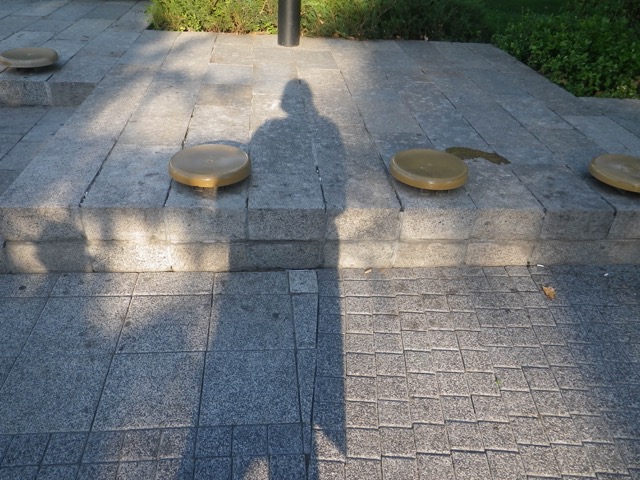

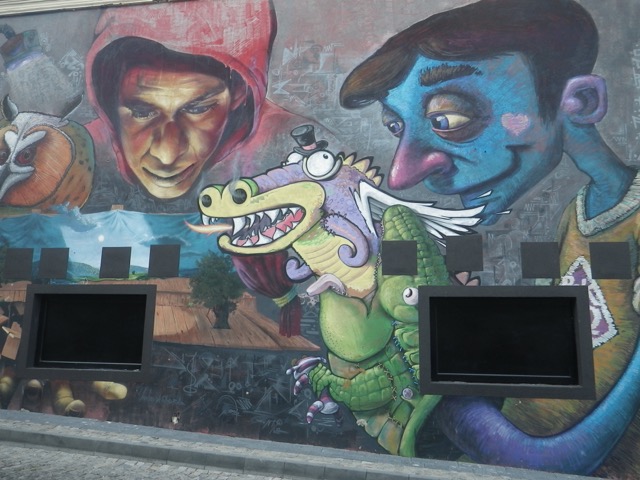

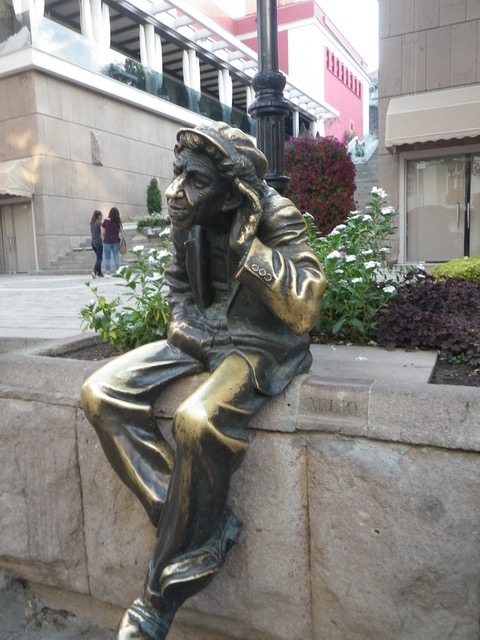
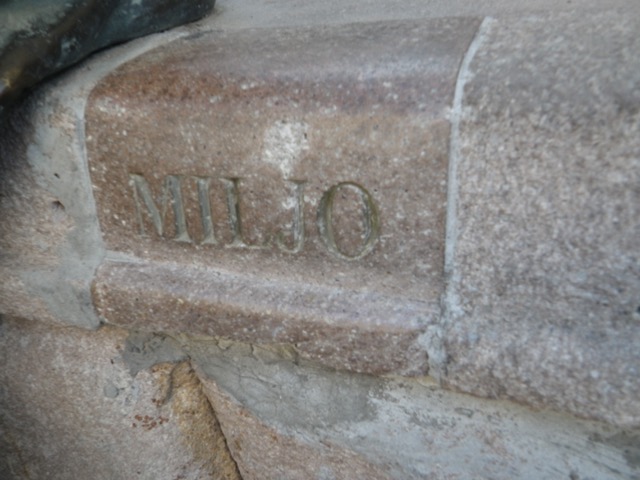




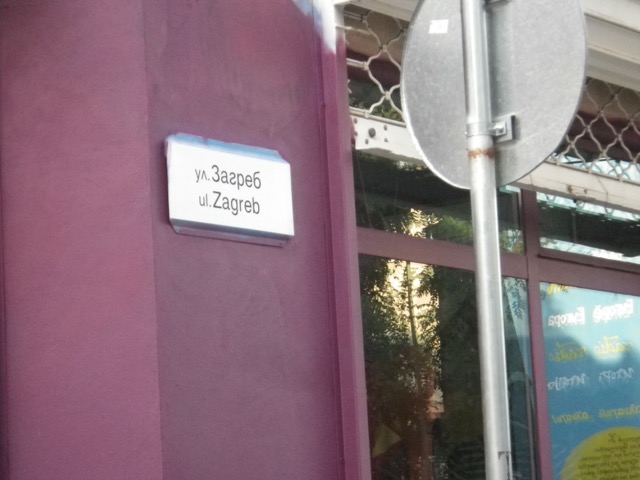







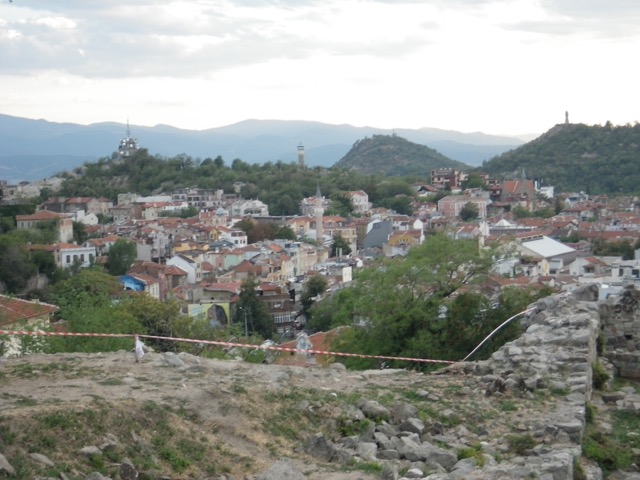

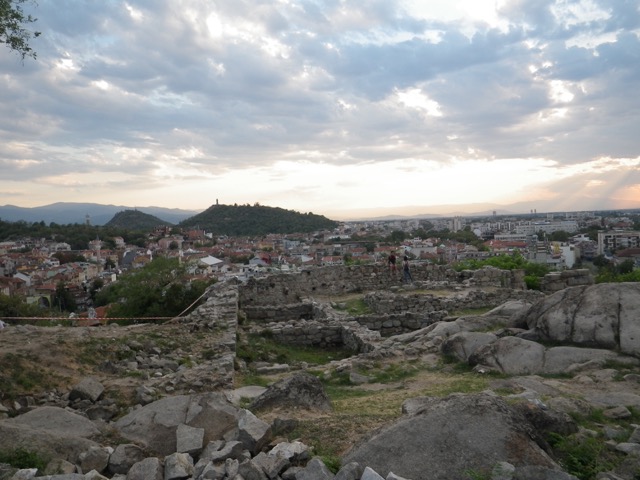
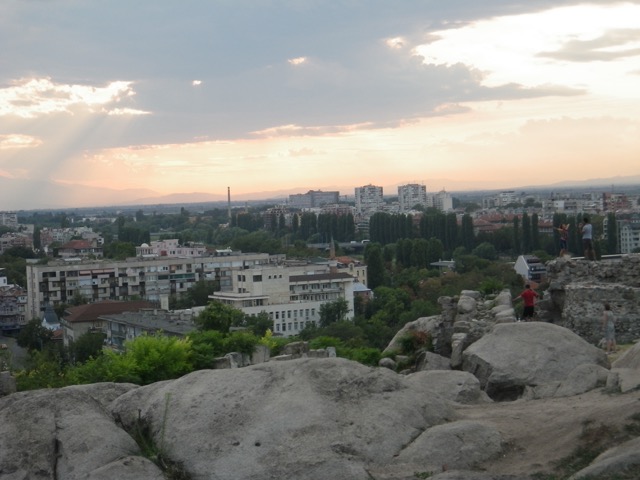
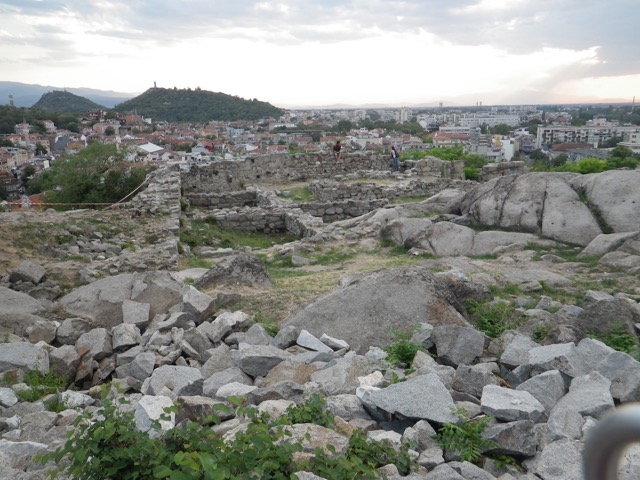
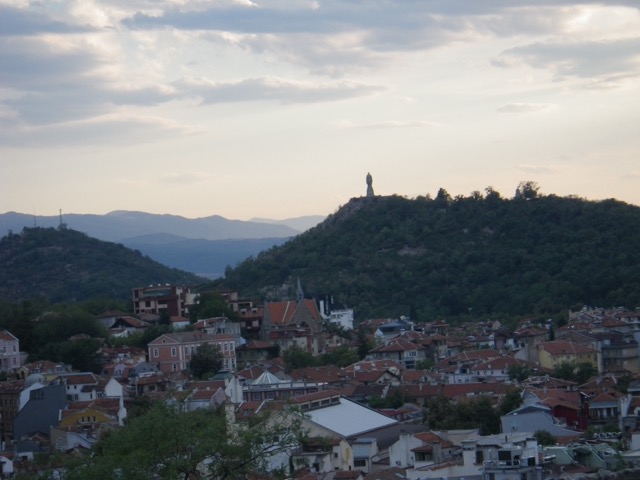
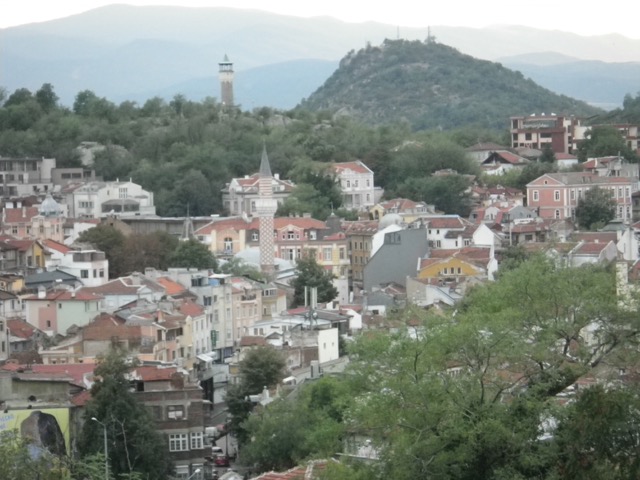

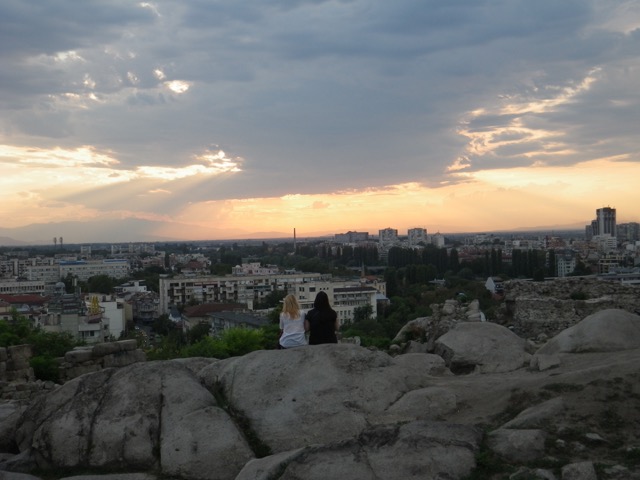

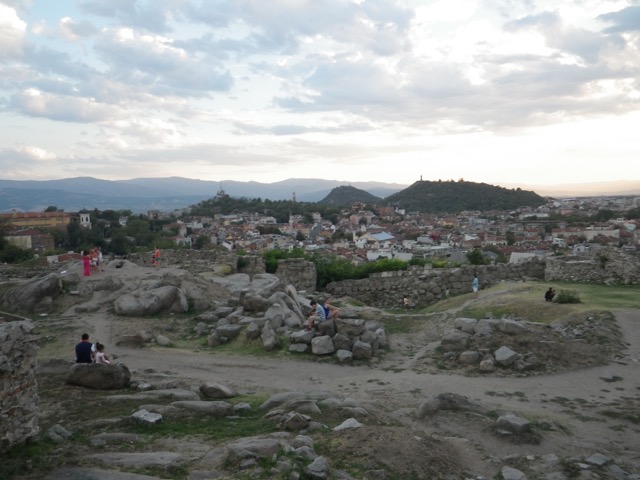


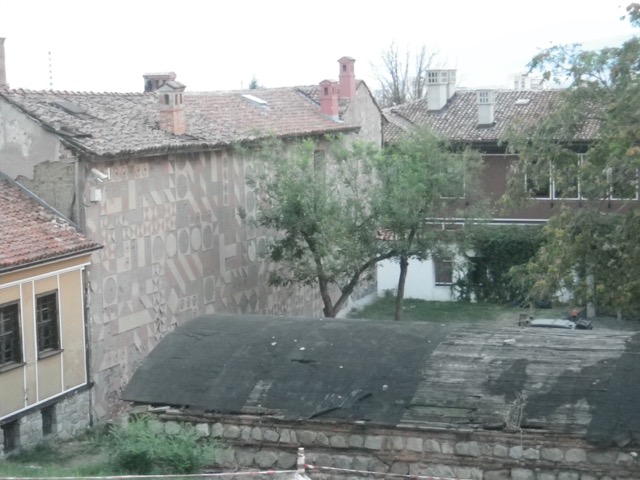
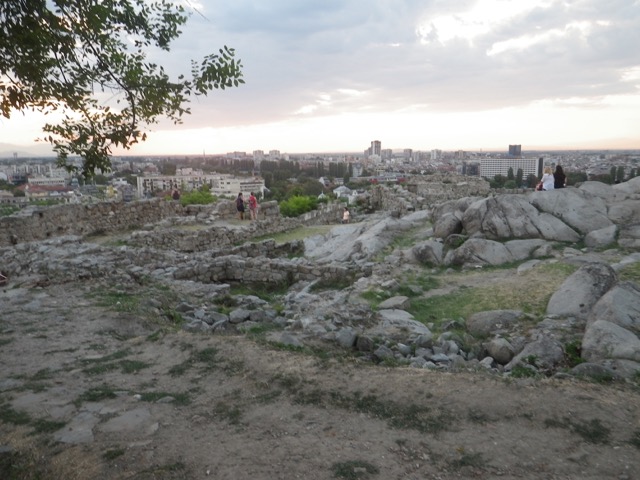
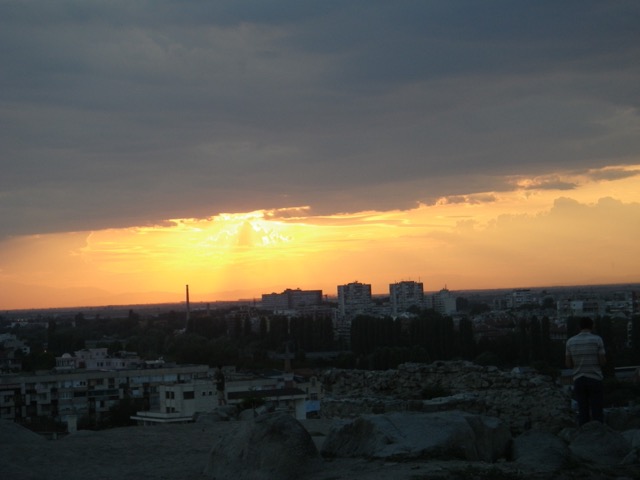
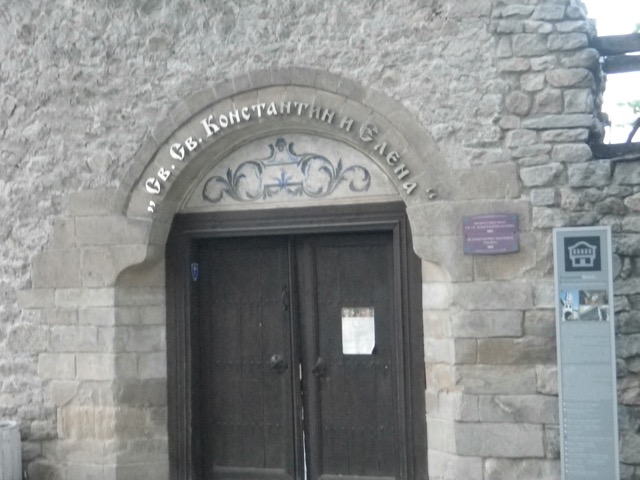

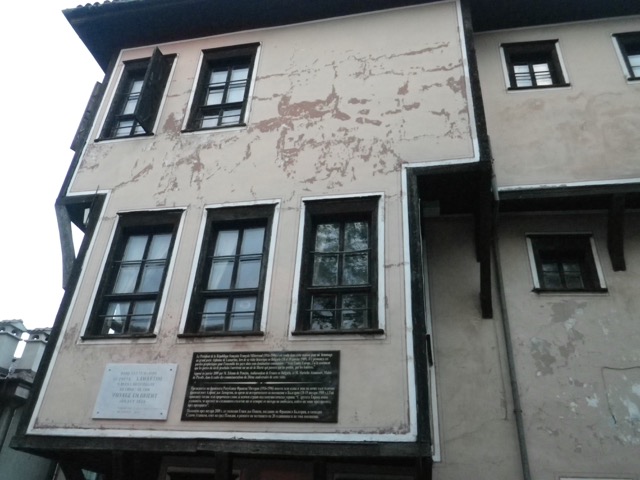



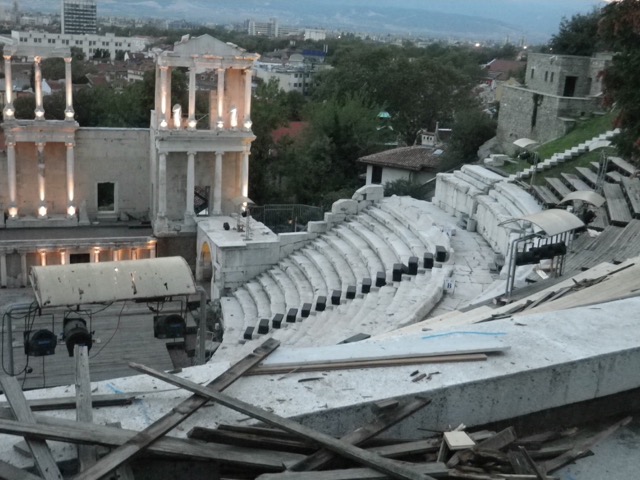


I would say the post office-stamp purchasing area is much more friendly.
All the food sounds good. Have you found a bakery?… maybe not so much like the states but more of a communal type or handcrafted breads & pastries?
Good walking tour & full of pictures.
Thanks!
There are a lot of bakeries, but more the kind where you pick up a pastry and a coffee than what I saw in Mexico. I’m not really looking for that kind, though.
Gorgeous pictures. Thanks for the tour.
Thanks and glad you enjoyed!
Thank you for coming along!
Pingback: Returning the Car to Plovdiv and a Friday Evening in Sofia |